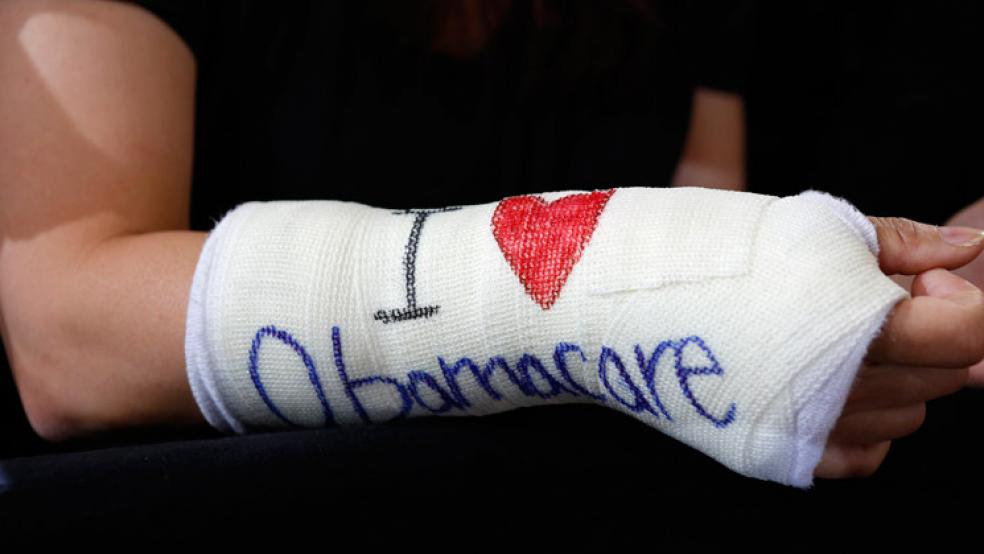The disastrous rollout of the HealthCare.gov website has so far kept enrollment well below the levels the Obama administration had sought. Yet as the administration works to fix the numerous technological problems that have plagued the site (it now says that the error rates with the problematic “834 transactions” that transmit enrollment data to insurers have been close to zero since the beginning of December), HealthCare.gov will be getting some outside help in trying to lure consumers to sign up for insurance plans.
The Wall Street Journal reports that, ahead of the Dec. 23 deadline to sign up for coverage that takes effect Jan. 1, “insurers are starting to blanket the airwaves and social media with glitzy ads urging consumers to buy their plans.”
WellPoint, for example, had delayed a planned ad campaign because of the website troubles but now plans to spend up to $100 million by the end of the year on ads that mostly target the young and healthy. Those “young invincibles” are key to the success of the health care reform, as their premiums will subsidize costs for older and sicker insurance buyers.
Related: Millennials Jump Ship Over Obamacare Bait and Switch
That marketing push will be building on already-increased ad spending levels. Insurers and the federal and state-run exchanges spent $194 million on local media buys between Oct. 1 and Nov. 10, according to Kantar Media data cited by the Journal. That figure, covering less than six weeks, is just $22 million shy of the total spent by insurers on such ads in all of 2012. A trade association for local broadcasters is projecting that insurers will spend $500 million on local TV ads in 2014. “The ad campaigns are a major shift in strategy for health insurers, most of whom have never really had to market directly to consumers aggressively until now,” the Journal notes.
That ramped up competition and spending highlights just how important the new Obamacare marketplaces could be to the industry. A recent analysis by consumer finance website ValuePenguin.com found that the 45 million uninsured Americans could be worth $92 billion or more in annual premiums to insurers. Obamacare requires that 80 percent of the value of premiums be spent on health care costs, but that still leaves as much as $3.6 billion in profits out there for the taking in the long term, according to the website’s calculations.
Those numbers may be high. The Congressional Budget Office had projected that 7 million Americans would sign up for coverage through the exchanges by the end of March and some 25 million by 2018; the near-term target, at least, appears to be well out of reach. But the potential for profits, particularly with younger, healthier consumers is very real – and clearly appealing for an industry undergoing massive shifts with the introduction of the new exchanges.
As Greg Sargent notes, the insurance industry’s big money bet on Obamacare comes just as Republicans are betting that Obamacare has already failed, and that a singular focus on the health care mess is their best strategy for victory in 2014. “Ideally, we’d freeze things the way they are in amber until November,” a senior GOP House aide told Time magazine. “But, obviously, that’s not possible.”
The insurance industry itself will be trying to make sure it isn’t.
Top Reads from The Fiscal Times:





